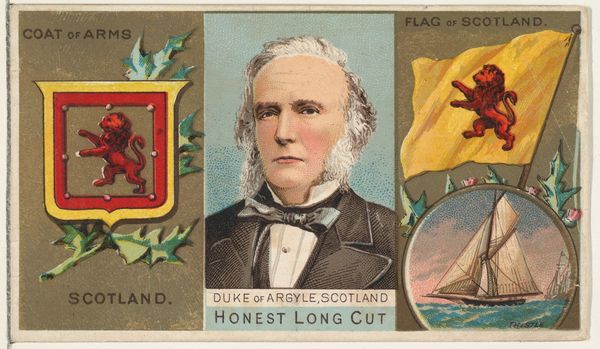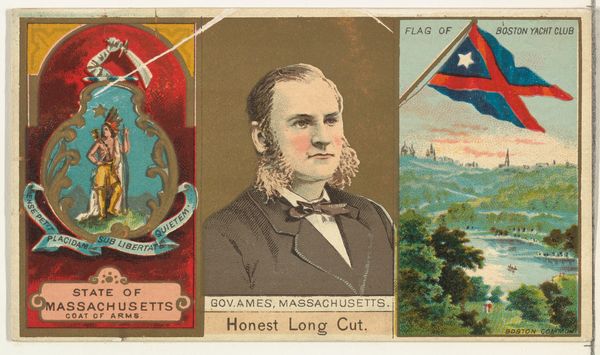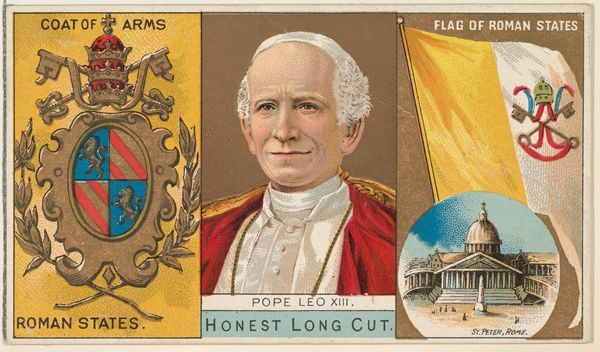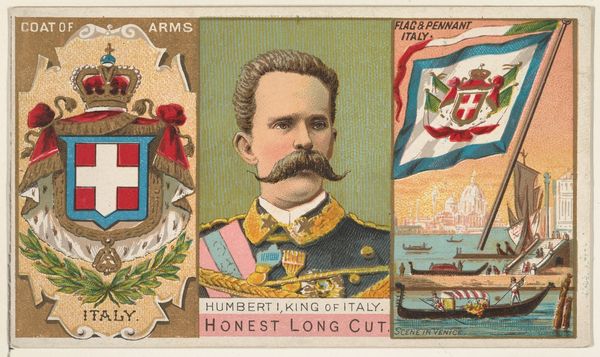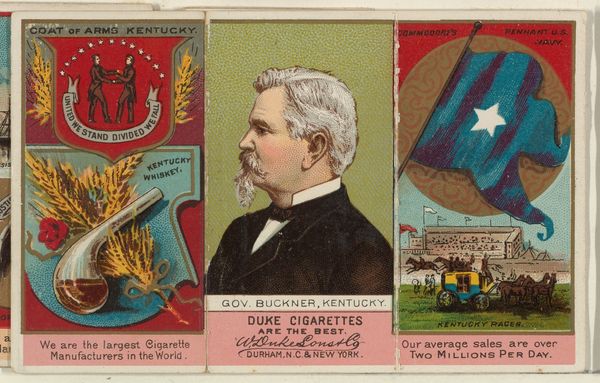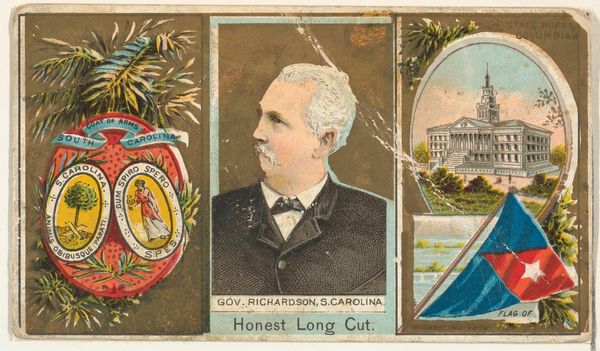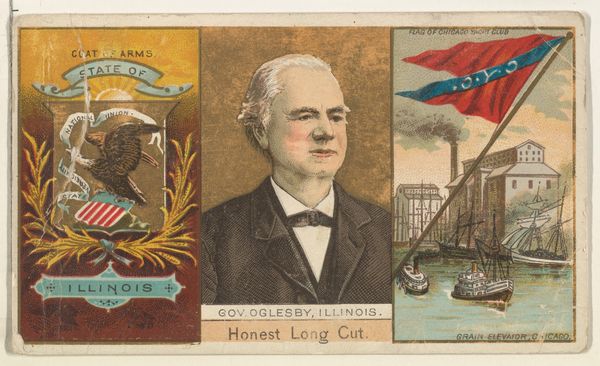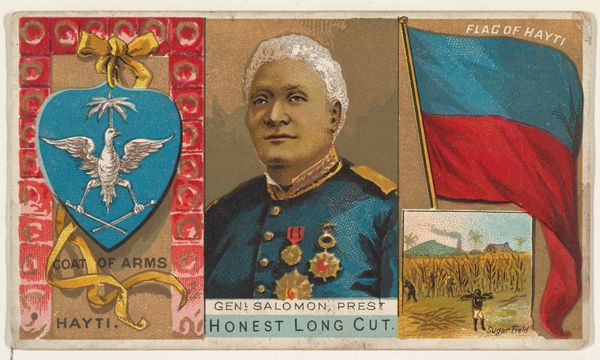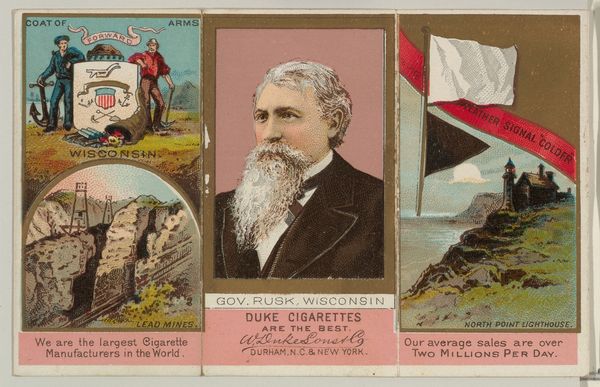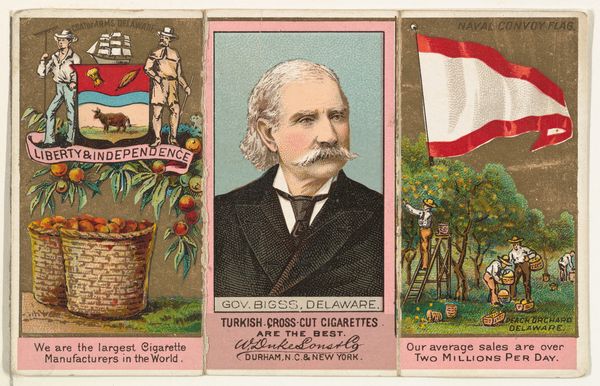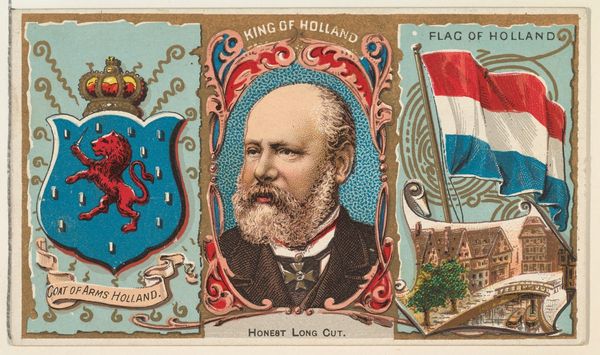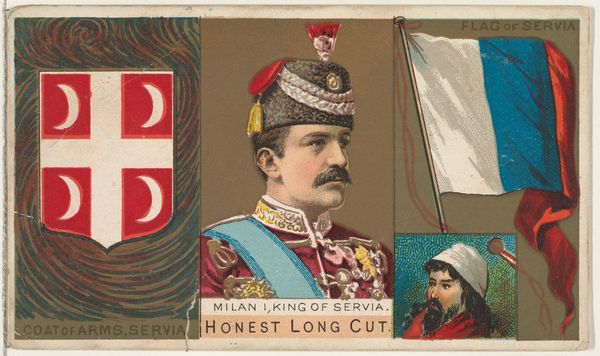
Franz Liszt, Pianist, Hungarian, from the Rulers, Flags, and Coats of Arms series (N126-1) issued by W. Duke, Sons & Co. 1888
0:00
0:00
print, collotype
#
portrait
# print
#
caricature
#
figuration
#
collotype
Dimensions: Sheet: 2 1/2 × 4 5/16 in. (6.4 × 11 cm)
Copyright: Public Domain
Curator: So, tell me what grabs you about this W. Duke, Sons & Co. cigarette card from 1888. It’s titled "Franz Liszt, Pianist, Hungarian, from the Rulers, Flags, and Coats of Arms series". Made with collotype, etching, and other printmaking methods… what stands out? Editor: It's fascinating how they packed so much information into such a tiny space! There's Liszt, a coat of arms, a flag… It feels very… official, like a miniature history lesson. How would you interpret a piece like this? Curator: Let's think about what this object *is*: a cigarette card. These weren’t meant for museums; they were capitalist tools, incentives embedded within consumer products. Who benefitted from circulating images of Liszt alongside national symbols? Consider the laborers involved – from the tobacco farms to the printing press workers – all contributing to the circulation of this tiny, propagandistic artwork. Editor: Propagandistic? That's a strong word! It seems quite benign. Curator: But who is being elevated and why? Think about how these images reinforce a certain social hierarchy. It is subtle, but these consumer items ingrained within people an implicit ideology by combining images of the powerful and cultural symbols. Also, what materials were readily available and cheap enough for mass production like this? What processes were required? The means of production is really the message here. Editor: So, it's less about Liszt as an individual and more about the economic and social system that produced this card? Curator: Precisely. And about how something seemingly insignificant reinforced larger power structures. We are seeing a distillation of nationhood and celebrity used to sell cigarettes. Editor: That definitely changes my perspective. I'll think of cigarette cards in a new light now. Curator: That’s the aim: to see how material objects shape and reflect our world.
Comments
No comments
Be the first to comment and join the conversation on the ultimate creative platform.
